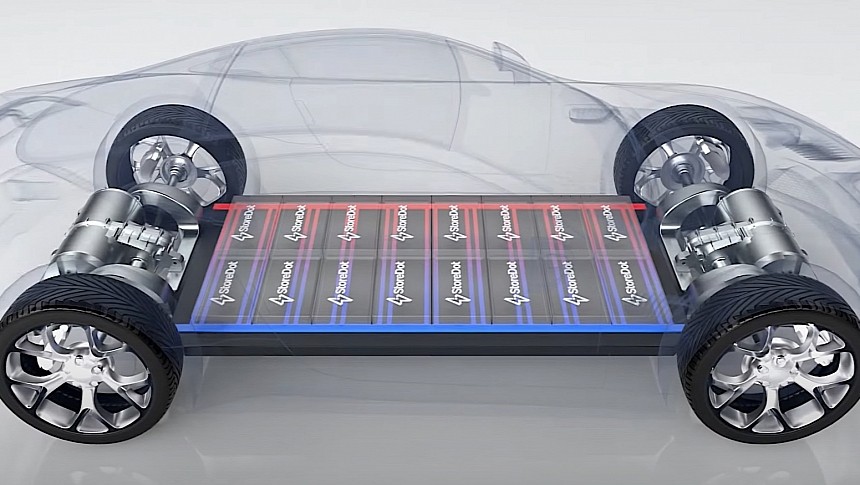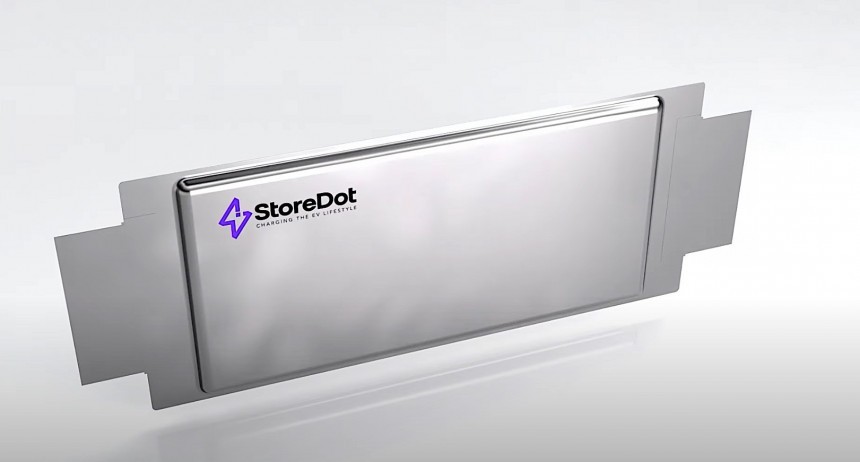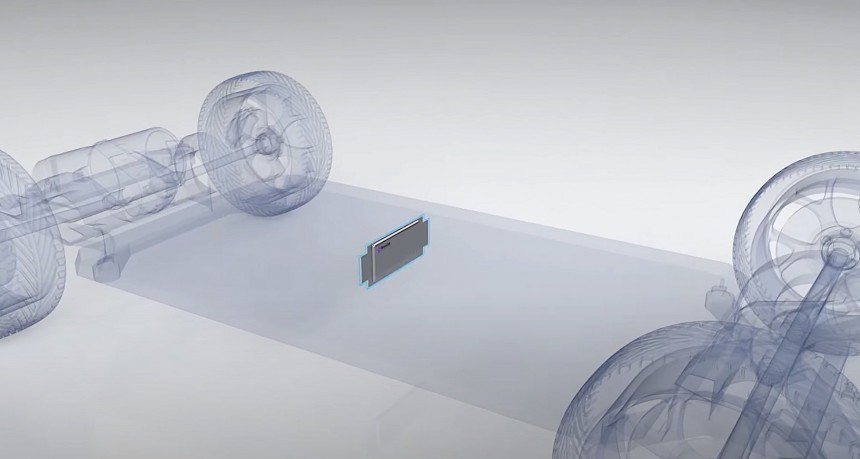Now that electric vehicles and the technologies that power them have settled in a position of strength (meaning they're slowly taking hold of the market), the race is on between the companies involved to better them all and eliminate the few remaining things that are holding EVs back.
One such thing is charging time for the car's battery. Despite the many advancements in fast-charging technologies made in recent years, it still takes an uncomfortable amount of time for many production EVs to get their fill. At least when compared with the ultra-fast operation of filling a vehicle's tank with conventional fuel, that is.
There have been many studies made in the search for the fastest-charging EVs on the market, and the results are all over the place. That's because charging time and speed vary greatly, depending on a multitude of factors.
The best vehicles when it comes to charging speeds are also the most exotic and expensive, which is to be expected. The Lucid Air and Rivian R1T, for instance, get their fill in ideal conditions at speeds that can reach as much as 20 miles (32 km) per minute. Yet the bulk of present-day EVs are nowhere near that.
But what if they were? What if, for instance, you could get 100 miles (160 km) of range in just five minutes? Double that in ten? Isn't that more or less the same amount of time you spend at a gas station, filling it up and paying for the fuel?
It probably is, and it's a reality that may soon come to pass if an Israeli company called StoreDot has its way.
In the market for more than a decade now, StoreDot is in the business of making lithium-ion batteries for electric vehicles. Not just any lithium-ion batteries, but ones that can accept extreme fast charging like described above, without overheating and degrading.
The company calls its idea, which will be commercially known as I-Beam XFC, a cell-to-pack approach. It is centered on a cell technology named 100in5, because that's the charging speed it is capable of: 100 miles in five minutes.
The hardware side of the system is pretty simple and straightforward: these highly capable electrodes are integrated into cells, which in turn can be incorporated directly into the battery pack.
This approach removes the challenges posed by adapting the tech to current electric vehicle architectures, which focus more on range and energy density than fast charging.
Another thing that is special about the tech is the cooling system. The I-Beam XFC has it built-in, with cooling coming directly from within the structure of each cell. This approach has a series of advantages, the most important of all being the prevention of localized hotspots, uniform temperature distribution, and the acceptance of ultra-high currents.
It's known that batteries that use fast charging have a tendency to degrade over time, but apparently that's not the case with the StoreDot solution. Because of something that is described as an entirely new chemistry (we have no details on that yet), batteries have been tested so far to up to 1,200 fast charge cycles, and they resulted in no damage to the battery. Additionally, a consistent charging rate was reported.
All of the above sounds great and all, but we'll probably have to wait for quite some time before the tech gets here. It is, as per StoreDot, still a concept.
The company does say, though, that it really intends to make the I-Beam XFC commercially available. To that end, several patents for the tech used in the battery have already been secured.
So, when are we to expect something more tangible on the tech? StoreDot promises 2024 will be a landmark year for the design, as several milestones will be reached this year.
More to the point, a demonstration of the tech with it installed on an electric vehicle is planned. We have no details yet about the EV itself, but we'll keep an eye out for it and report back once we learn more.
Additionally, StoreDot plans to start shipping prismatic B-samples of the cells to original equipment manufacturers as it tries to gauge their reaction, but also to advertise its product in the hopes it will be something we drivers could enjoy in all vehicles, not only the top of the range ones.
An expansion of operations into the United States is also planned, although we get no word on what form it would take.
Until we get to learn more about the I-Beam XFC and how it may potentially change the direction of the automotive industry, you can have a look at the short video below. It explains, in a simple and easy fashion, how the tech is supposed to work and why it makes us say it could "change the direction of the automotive industry."
There have been many studies made in the search for the fastest-charging EVs on the market, and the results are all over the place. That's because charging time and speed vary greatly, depending on a multitude of factors.
The best vehicles when it comes to charging speeds are also the most exotic and expensive, which is to be expected. The Lucid Air and Rivian R1T, for instance, get their fill in ideal conditions at speeds that can reach as much as 20 miles (32 km) per minute. Yet the bulk of present-day EVs are nowhere near that.
But what if they were? What if, for instance, you could get 100 miles (160 km) of range in just five minutes? Double that in ten? Isn't that more or less the same amount of time you spend at a gas station, filling it up and paying for the fuel?
It probably is, and it's a reality that may soon come to pass if an Israeli company called StoreDot has its way.
In the market for more than a decade now, StoreDot is in the business of making lithium-ion batteries for electric vehicles. Not just any lithium-ion batteries, but ones that can accept extreme fast charging like described above, without overheating and degrading.
The hardware side of the system is pretty simple and straightforward: these highly capable electrodes are integrated into cells, which in turn can be incorporated directly into the battery pack.
This approach removes the challenges posed by adapting the tech to current electric vehicle architectures, which focus more on range and energy density than fast charging.
Another thing that is special about the tech is the cooling system. The I-Beam XFC has it built-in, with cooling coming directly from within the structure of each cell. This approach has a series of advantages, the most important of all being the prevention of localized hotspots, uniform temperature distribution, and the acceptance of ultra-high currents.
It's known that batteries that use fast charging have a tendency to degrade over time, but apparently that's not the case with the StoreDot solution. Because of something that is described as an entirely new chemistry (we have no details on that yet), batteries have been tested so far to up to 1,200 fast charge cycles, and they resulted in no damage to the battery. Additionally, a consistent charging rate was reported.
All of the above sounds great and all, but we'll probably have to wait for quite some time before the tech gets here. It is, as per StoreDot, still a concept.
So, when are we to expect something more tangible on the tech? StoreDot promises 2024 will be a landmark year for the design, as several milestones will be reached this year.
More to the point, a demonstration of the tech with it installed on an electric vehicle is planned. We have no details yet about the EV itself, but we'll keep an eye out for it and report back once we learn more.
Additionally, StoreDot plans to start shipping prismatic B-samples of the cells to original equipment manufacturers as it tries to gauge their reaction, but also to advertise its product in the hopes it will be something we drivers could enjoy in all vehicles, not only the top of the range ones.
An expansion of operations into the United States is also planned, although we get no word on what form it would take.
Until we get to learn more about the I-Beam XFC and how it may potentially change the direction of the automotive industry, you can have a look at the short video below. It explains, in a simple and easy fashion, how the tech is supposed to work and why it makes us say it could "change the direction of the automotive industry."










